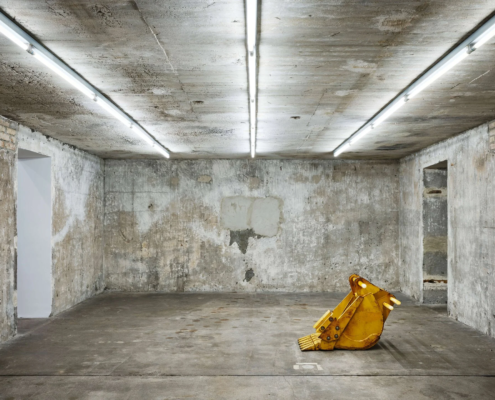At a certain stage of your career you realized that non-figurative sculptures can sometimes portrait a person or a personal quality better than any figurative reference and that your main interests lay in abstraction rather than illustration. Do you think you art needs to be decoded?
Representation is the use of signs that generally take the place of something else. Since ancient times representation has been deemed as natural to man and therefore necessary for people’s learning and being in the world. The ability to project something human onto something that’s not human at all, say, your small belongings, your car, your room etc., is a definitively human activity and to me one of the most fascinating ones. As a sculptor, I want to honor that specific human instinct by projecting narratives and feelings onto our everyday objects and achieve what I call empathy or sometimes sympathy. Even though today progress happens at a furious pace and both technology and science force us to deal with macro realities that we neither see nor touch we still rely on imagination. Does my art need to be decoded? Well, I think the liminal divide between abstraction and representation has been blurred a long time ago so I would say no. This kind of abstraction stands on her own and is generous with whomever has a desire to understand it.
Your interventions have often been praised as modest and restrained. On one hand, working on a global scale allowed you to travel a lot and perhaps quench your wanderlust but on the other it might have contributed to deepen your sense of vulnerability and melancholy. However, as an artist, you’ve found your own way to weave histories of human passions and fleeting places in a flux without moving much further from the innermost core of yourself which seems to be the most exquisite oriental melancholy. Don’t you think that melancholy could be easily mistaken for an act of self-negation and “airtight” concealment? I know you’ve repeatedly warned viewers against such a reading but it’s difficult not to keep bouncing back to it, especially for those who don’t have a well-rounded understanding of your works.
They call it modesty, I’d rather call it ignorance or blindness on my part. On one hand I acknowledge the impossibility to communicate and fill the chasm between what I am to others and what I am to myself. But on the other I clearly see the risks of cutting myself off and not communicate at all. I think I will be truly accepted and understood by the others when I make an effort to not take their openness as a given but rather as a generative force that helps me shake free of prejudices. Of course it’s not easy and it takes a great amount of bravery but I believe that’s exactly what artists need to come up with. They need a feedback from the others as they deal with uncertain things that cannot be proven as true or false.
 https://www.nastymagazine.com/wp-content/uploads/2023/08/IMG_3946.webp
1440
1920
admin
https://www.nastymagazine.com/wp-content/uploads/2015/02/new-logo-basker-WHITE4.png
admin2023-08-31 19:58:362023-10-04 20:29:25Boros Collection #4 / Berlin
https://www.nastymagazine.com/wp-content/uploads/2023/08/IMG_3946.webp
1440
1920
admin
https://www.nastymagazine.com/wp-content/uploads/2015/02/new-logo-basker-WHITE4.png
admin2023-08-31 19:58:362023-10-04 20:29:25Boros Collection #4 / Berlin









